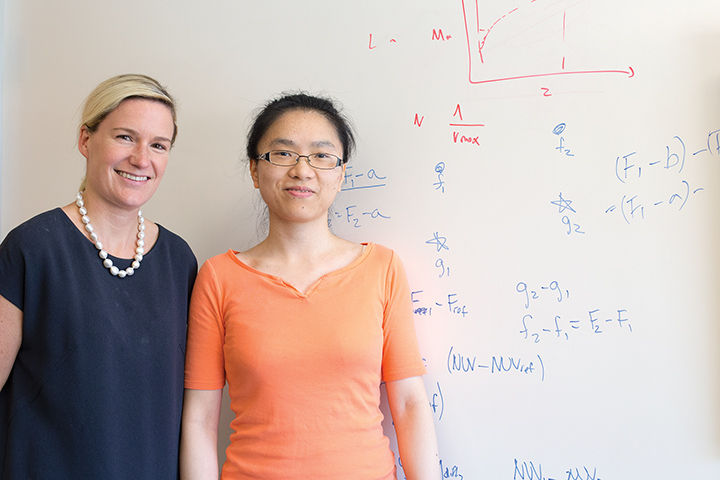
Astronomy professor Suvi Gezari and graduate student Tingting Liu have been researching the merger of two supermassive black holes.
Recent observations by university researchers provides evidence supporting a previously unverified phenomenon: two supermassive black holes orbiting so close to each other that they will eventually merge.
The researchers, who documented their findings in a study published last month in The Astrophysical Journal Letters, said the proximity of these two black holes might mean that, for the first time, scientists could witness black holes collide in the near future.
“It’s a really exciting topic because we know that galaxies, throughout their lifetime, suffer various collisions with other galaxies and that they can end up merging. We think this should also result in black holes coming together and merging,” said Suvi Gezari, a co-author of the study. “Even though we assume this process happens, we have never really seen evidence to confirm it.”
Theorists had previously proposed that evidence of binary supermassive black holes — two black holes orbiting each other due to gravitational attraction — could be seen with telescopes, said Gezari, an assistant professor in the astronomy department. But black holes are always hard to see, and binary black holes are even harder, she said.
“It’s hard to see black holes because they themselves don’t radiate light. We can only see them if they’re tugging on stars or gas nearby or heating up gas as it falls through,” Gezari said. “When black holes get close enough to be gravitationally attracted to each other, you can’t see them. It’ll look like one source, so we have to look for these binary black holes through a more indirect method.”
As matter falls into a black hole, a lot of light is emitted, Gezari said. These objects, which make the black holes look luminous, are called quasars, and scientists can observe them through telescope data.
Gezari said she realized the Panoramic Survey Telescope and Rapid Response System, a telescope based in Hawaii that surveys different sections of the sky each night, could provide useful data in searching for these binary supermassive black holes.
She and Tingting Liu, the lead author of the study and an astronomy graduate student at this university, began to look at data from the telescope to see if they could pinpoint any quasars that exhibited abnormal light variation, which could indicate the presence of binary black holes.
Eventually, they found a potential candidate.
After identifying the candidate quasar, Liu said, careful analysis was needed to confirm the light signatures from the quasar varied enough to indicate a binary black hole and not a normal quasar.
After several simulations and calculations, they were confident their data indicated the black holes they were searching for, Gezari said.
Using Pan-STARRS1 along with previous data on the quasar, they were also able to determine the orbital separation of the black holes, Gezari said.
“The black holes were so close together they were already losing energy due to gravitational waves,” she said. “Basically we could watch that merger happen in the next two decades.”
Richard Mushotzky, an astronomy professor at this university who was not involved with this research, said this discovery could be significant in the overall study of black holes.
“One of the big things we’re trying to understand in all of astronomy is how things evolve,” he said. “People have been looking for an indication that some galaxies have two black holes at the center that, over time, may come together.”
Mushotzky said this candidate could provide useful insight regarding theories of merging black holes which have never before been verifiable.
“When a merger occurs, all sorts of interesting new things are predicted to occur but haven’t really been seen before,” he said. “Actually finding a merger that might happen and can be studied in our lifetime is a huge opportunity.”
In the meantime, Liu said, she will continue to comb through the Pan-STARRS1 data to search for other possible examples of this kind of merger as part of her graduate thesis. Gezari said they expect there are a lot more to be found.
“Theory predicts quite a lot of these systems merge with each other all the time, but we don’t really see a lot of the remnants of galaxies mergers,” Liu said. “Pan-STARRS is the best way to observe it that we’ve found, and when this thesis is completed, it will be the first time someone has looked for these binary supermassive black holes with this method.”



